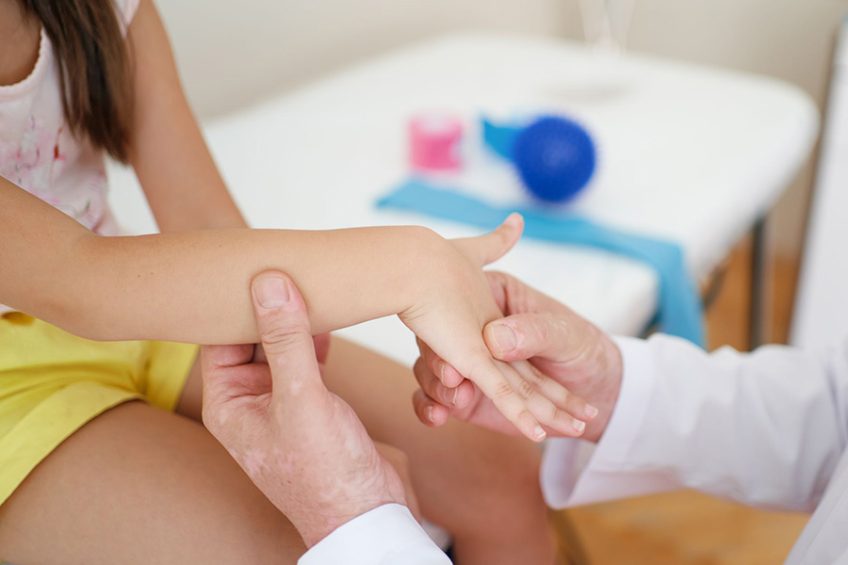Juvenile idiopathic arthritis (JIA) is a characterized chronic disease by persistent inflammation of the joints. Typical signs of joint inflammation are: pain, swelling and limited movement. “Idiopathic” means that we do not know the cause of the disease and “juvenile”, in this case, means that the symptoms appear before the age of 16.
Juvenile idiopathic arthritis (JIA) is one of the many rheumatic diseases encountered in childhood and affects between 80 and 90 children in 100,000. It is a chronic disease that mainly affects the joints (dominant lesion) but not only.
Many people are surprised when they find out that even at this age there are rheumatic diseases because in their acceptance these diseases appear only in the third decade of life. JIA is not a single disease but several diseases – 7 in number gathered under the same name and have in common joint damage.
CONTENT:
What are the causes of Juvenile Idiopathic Arthritis?
Our immune system protects us from infections (viruses and bacteria). In this action he is able to distinguish harmless cells that belong to our body (which he tolerates) from foreign and potentially dangerous cells (he destroys them).
Chronic arthritis is thought to be a consequence of the abnormal response of our immune system, which, for unknown reasons, loses some of its ability to distinguish between normal and dangerous cells.
Following this abnormal response, the body attacks its own joint components, which leads to chronic arthritis. For this reason, diseases such as JIA are called autoimmune, which means that the immune system reacts against the body’s own organs.
However, the exact mechanisms that produce chronic human inflammatory diseases (including JIA) are unknown.
What are the symptoms of Juvenile Idiopathic Arthritis?
Initially, it appears as an inflammatory reaction in the synovials (probably as an immune response to an infection), followed by proliferative synovial damage and destruction of cartilage.
ARJ is characterized by chronic synovitis and extraarticular systemic manifestations:
- Arthritis: disabling joint deformities (due to inflammation of the joint space and joint swelling); local pain varying in intensity, difficult to diagnose in young children; limiting joint movements
- Morning joint stiffness: it is characteristic, but difficult to detect in young children; it is improved by sitting before standing or by warm local applications (warm compresses, warm baths)
- Growth disorders by stature growth retardation
- Altered general condition, due to cardiovascular damage
What is the treatment of Juvenile Idiopathic Arthritis?
There is no specific therapy to cure JIA. The aim of the treatment is to allow the children to lead a normal life and to prevent damage to the joints and organs, while waiting for the spontaneous remission of the disease. Treatment is mainly based on the use of drugs that inhibit inflammation and on rehabilitation procedures that preserve joint function and help prevent deformities.
The therapy is complex and requires the cooperation of several specialists (eg rheumatologists, pediatricians, orthopedic surgeons, physiotherapists, ophthalmologists).
1) Non-steroidal anti-inflammatory drugs (NSAIDs)
These are symptomatic anti-inflammatory and antipyretic drugs (control fever). The term “symptomatic” means that they cannot cause remission of the disease, but serve to control the symptoms caused by inflammation. The most commonly used are ibuprofen and naproxen.
Aspirin, although effective and inexpensive, is less used nowadays because of the risk of toxicity. NSAIDs are usually well tolerated and gastric discomfort (effect secondary more common in adults) is less common in children. A NSAID does not prescribe two NSAIDs at the same time, but one NSAID may be effective if another has failed. The optimal effect on joint inflammation occurs after a few weeks of treatment.
2) Intra-articular cortisone injections
They are used thenwhen few joints are involved and when there is a risk of long-term damage. The injected drug is a long-acting cortisone preparation. Triamcinolone hexacetonide is preferred for its prolonged effect (often several months).
3) The drugs from the second stage
They are prescribed for children with progressive polyarthritis, despite appropriate therapy with NSAIDs and intra-articular cortisone. Medicines in this category are added to NSAID therapy, which must therefore be continued.
4) Corticosteroids
These are the most effective anti-inflammatory drugs available, but their use is limited because long-term use induces several important side effects, including osteoporosis and stopping growth. They are, however, valuable for the treatment of systemic symptoms that are resistant to other treatments, for life-threatening systemic complications, and for controlling the acute phase of JIA while waiting for stage II drugs to take effect.
Topical steroids (eye drops) are used in the treatment of iridocyclitis. In more severe cases, injection of cortisone around the eyes or systemic administration of steroids may be required.
5) Orthopedic surgeries
The main procedures are joint prostheses (replacement in case of joint destruction) and surgical release of soft tissues (in case of permanent contractures).
6) Rehabilitation
This is an essential component of treatment. It includes proper exercise and, where necessary, wearing splints to correct posture. Rehabilitation therapy should be started early and should be performed throughout the disease to maintain joint mobility, trophicity and muscle strength as well as to prevent, limit or correct deformities.


